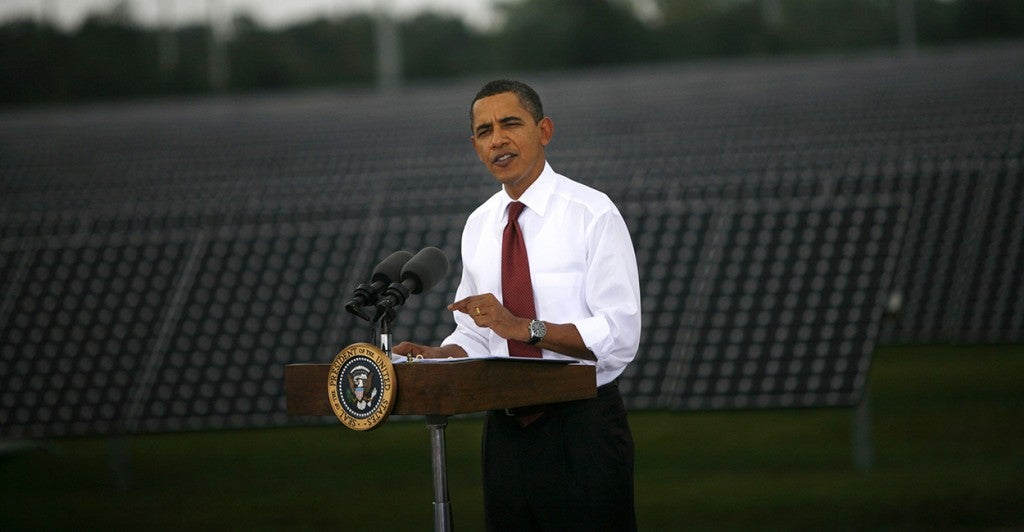In November 2010, President Obama stood before reporters in the White House briefing room and offered a frank description of his administration’s chances of getting heavy-duty environmental regulations through Congress.
That was in the final days before Republicans seized control of the U.S. House in Obama’s first mid-term. Unable to get greenhouse gas emissions rules through a Democratic Congress, Obama acknowledged it would be far less likely in the soon-to-be divided government.
“I think there are a lot of Republicans that ran against the energy bill that passed in the House last year,” Obama said. “And so it’s doubtful that you could get the votes to pass that through the House this year or next year or the year after.”
It’s now the year after the year after, but the situation is the same.
Today, the administration will see what it can accomplish without congressional approval. The Environmental Protection Agency plans to announce new policies designed to cut carbon emissions at American power plants.
Some details have already leaked out. The new regulations will vary by state, but each state will have to hit targets for carbon emissions—rather than previous EPA regulations that have set limits for specific facilities but never for an entire state or the whole nation—in a two-step process intended to reduce carbon emissions by 25 percent by 2030, the Washington Post reported.
Those mandatory reductions will be a heavy drag on the economy, according to a report issued by the U.S. Chamber of Commerce and several other groups representing energy companies.
“They are working on really the most signification EPA regulation, or any regulation, in American history. Certainly, it’s EPA’s costliest regulation,” said Matt LeTourneau, director of communications for the U.S. Chamber.
The report uses a combination of sources in an attempt to determine what the Obama administration might have up its sleeve. The Chamber relied on a comprehensive emissions plan published by the National Resources Defense Council, which is working closely with the EPA to craft the new rules, and took into account international agreements the administration has made, such as the Copenhagen Accords.
If their prognostications are true, the Chamber expects the new EPA regulations to cost 200,000 jobs per year and as much as $51 billion in annual GDP. The changes also would cause electricity prices to skyrocket for individual consumers and businesses, according to the Chamber.
The high costs will be incurred because the new regulations target not only new power plants but also require existing plants be retrofitted or closed in favor of new forms of energy.
LeTourneau said nearly all coal-fired plants would be shut down, and even some natural gas power plants could face the axe.
Even with all those cutbacks, global emissions would be reduced by just 1.8 percent, the Chamber says, because most of the growth in emissions is coming from places such as China and India.
Tom Reynolds, a spokesman for the EPA, took to the agency’s blog Wednesday to respond to the Chamber’s report.
Reynolds said the EPA had gathered testimony from hundreds of groups, including many that are members of the U.S. Chamber, and promised more meetings after the new rules are announced. He said the Chamber’s report had significant holes because the group was working off assumptions and other sources, not the actual EPA regulations.
“The Chamber’s report is nothing more than irresponsible speculation based on guesses of what our draft proposal will be. Just to be clear—it’s not out yet. I strongly suggest that folks read the proposal before they cry the sky is falling.”
If the new regulations are as onerous as business groups believe, and if they are adopted into law without congressional approval, expect lengthy court battles over the issue. The Chamber was one of several groups to sue over the Affordable Care Act—which did have congressional approval—showing it is not afraid to take on the administration in court to delay or defeat costly new rules.
It likely will be years before any new carbon emissions standards for power plants are a reality, but the punch and counter-punch from the Chamber and the EPA shows the battle over messaging already has begun.
